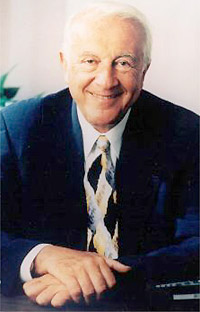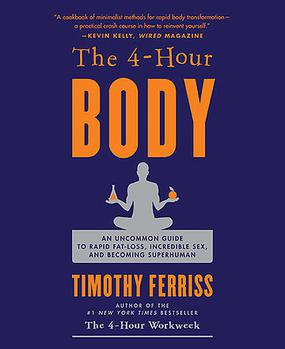Related Research Articles

A carbohydrate is a biomolecule consisting of carbon (C), hydrogen (H) and oxygen (O) atoms, usually with a hydrogen–oxygen atom ratio of 2:1 and thus with the empirical formula Cm(H2O)n, which does not mean the H has covalent bonds with O. However, not all carbohydrates conform to this precise stoichiometric definition, nor are all chemicals that do conform to this definition automatically classified as carbohydrates.

The Atkins diet is a low-carbohydrate fad diet devised by Robert Atkins in the 1970s, marketed with claims that carbohydrate restriction is crucial to weight loss and that the diet offered "a high calorie way to stay thin forever".

Robert Coleman Atkins was an American physician and cardiologist, best known for the Atkins Diet, which requires close control of carbohydrate consumption and emphasizes protein and fat as the primary sources of dietary calories in addition to a controlled number of carbohydrates from vegetables.

The glycemic (glycaemic) index is a number from 0 to 100 assigned to a food, with pure glucose arbitrarily given the value of 100, which represents the relative rise in the blood glucose level two hours after consuming that food. The GI of a specific food depends primarily on the quantity and type of carbohydrate it contains, but is also affected by the amount of entrapment of the carbohydrate molecules within the food, the fat and protein content of the food, the amount of organic acids in the food, and whether it is cooked and, if so, how it is cooked. GI tables, which list many types of foods and their GIs, are available. A food is considered to have a low GI if it is 55 or less; high GI if 70 or more; and mid-range GI if 56 to 69.

A fad diet is a diet that is popular, generally only for a short time, similar to fads in fashion, without being a standard scientific dietary recommendation, and often making unreasonable claims for fast weight loss or health improvements; as such is often considered a type of pseudoscientific diet. Fad diets are usually not supported by clinical research and their health recommendations are not peer-reviewed, thus they often make unsubstantiated statements about health and disease.
The Zone diet is a fad diet emphasizing low-carbohydrate consumption. It was created by Barry Sears, an American biochemist.

Low-carbohydrate diets restrict carbohydrate consumption relative to the average diet. Foods high in carbohydrates are limited, and replaced with foods containing a higher percentage of fat and protein, as well as low carbohydrate foods.
The glycemic load (GL) of food is a number that estimates how much the food will raise a person's blood glucose level after it is eaten. One unit of glycemic load approximates the effect of eating one gram of glucose. Glycemic load accounts for how much carbohydrate is in the food and how much each gram of carbohydrate in the food raises blood glucose levels. Glycemic load is based on the glycemic index (GI), and is calculated by multiplying the weight of available carbohydrate in the food (in grams) by the food's glycemic index, and then dividing by 100.

A high-protein diet is a diet in which 20% or more of the total daily calories comes from protein. Many high protein diets are high in saturated fat and restrict intake of carbohydrates.
The Montignac diet is a high-protein low-carbohydrate fad diet that was popular in the 1990s, mainly in Europe. It was invented by Frenchman Michel Montignac (1944–2010), an international executive for the pharmaceutical industry, who, like his father, was overweight in his youth. His method is aimed at people wishing to lose weight efficiently and lastingly, reduce risks of heart failure, and prevent diabetes.
A diabetic diet is a diet that is used by people with diabetes mellitus or high blood sugar to minimize symptoms and dangerous complications of long-term elevations in blood sugar.

Gary Taubes is an American journalist, writer, and low-carbohydrate / high-fat (LCHF) diet advocate. His central claim is that carbohydrates, especially sugar and high-fructose corn syrup, overstimulate the secretion of insulin, causing the body to store fat in fat cells and the liver, and that it is primarily a high level of dietary carbohydrate consumption that accounts for obesity and other metabolic syndrome conditions. He is the author of Nobel Dreams (1987); Bad Science: The Short Life and Weird Times of Cold Fusion (1993); Good Calories, Bad Calories (2007), titled The Diet Delusion (2008) in the UK and Australia; Why We Get Fat: And What to Do About It (2010); The Case Against Sugar (2016); and The Case for Keto: Rethinking Weight Control and the Science and Practice of Low-Carb/High-Fat Eating (2020). Taubes's work often goes against accepted scientific, governmental, and popular tenets such as that obesity is caused by eating too much and exercising too little and that excessive consumption of fat, especially saturated fat in animal products, leads to cardiovascular disease.
John A. McDougall is an American physician and author. He has written a number of diet books advocating the consumption of a low-fat vegan diet based on starchy foods and vegetables.

Weight management refers to behaviors, techniques, and physiological processes that contribute to a person's ability to attain and maintain a healthy weight. Most weight management techniques encompass long-term lifestyle strategies that promote healthy eating and daily physical activity. Moreover, weight management involves developing meaningful ways to track weight over time and to identify ideal body weights for different individuals.

The 4-Hour Body: An Uncommon Guide to Rapid Fat-Loss, Incredible Sex, and Becoming Superhuman is a nonfiction book by American writer Tim Ferriss. It was published by Crown Publishing Group in 2010.
The Dukan Diet is a high-protein low-carbohydrate fad diet devised by Pierre Dukan.
The following outline is provided as an overview of and topical guide to diabetes mellitus :
Fred Pescatore is a Manhattan-based author and internist who specializes in nutrition. He is best known as the author of the bestselling children's health book Feed Your Kids Well (1998) and The Hamptons Diet (2004).

Protein Power is a high-protein, low carbohydrate fad diet developed by physician Michael R. Eades and his wife Mary Dan Eades.
References
- 1 2 3 Goff SL, Foody JM, Inzucchi S, Katz D, Mayne ST, Krumholz HM (July 2006). "Brief Report: nutrition and weight loss information in a popular diet book: is it fact, fiction, or something in between?". Journal of General Internal Medicine. 21 (7): 769–74. doi:10.1111/j.1525-1497.2006.00501.x. PMC 1924692 . PMID 16808780.
- ↑ Sandra Bastin for University of Kentucky Extension Service. August 1998; revised March 2004. University of Kentucky Extension Service: Fad Diets
- ↑ "People to watch". Nature Medicine. 12 (1): 29. 2006. doi:10.1038/nm0106-29. ISSN 1078-8956. S2CID 26068107.
James Hill wants Americans to shed pounds. But instead of promoting any one fad diet, he embraces most--Atkins, South Beach, grapefruit-only--as relatively effective ways to lose weight.
- 1 2 3 Abby Goodnough (7 October 2003). "New Doctor, New Diet, But Still No Cookies". The New York Times .
- ↑ DeBruyne L, Pinna K, Whitney E (2011). "Chapter 7: Nutrition in practice – fad diets". Nutrition and Diet Therapy (8th ed.). Cengage Learning. p. 209. ISBN 978-1-133-71550-4.
'a fad diet by any other name would still be a fad diet.' And the names are legion: the Atkins Diet, the Cheater's Diet, the South Beach Diet, the Zone Diet. Year after year, 'new and improved' diets appear ...
- 1 2 3 "Sizing up South Beach. It makes some good points, but The South Beach Diet has problems typical of diet books: lack of proof and some dubious claims". Harvard Health Letters. 29 (1): 5. November 2003. PMID 14633496.
- 1 2 Chahoud G, Aude YW, Mehta JL (November 2004). "Dietary recommendations in the prevention and treatment of coronary heart disease: do we have the ideal diet yet?". American Journal of Cardiology (Review). 94 (10): 1260–7. doi:10.1016/j.amjcard.2004.07.109. PMID 15541241.
- 1 2 3 4 "Top diets review for 2014 § South Beach Diet". NHS Choices. 20 December 2013.
- ↑ Lara-Castro C, Garvey WT (2004). "Diet, insulin resistance, and obesity: zoning in on data for Atkins dieters living in South Beach". Journal of Clinical Endocrinology and Metabolism (Review). 89 (9): 4197–205. doi: 10.1210/jc.2004-0683 . PMID 15356006.
- 1 2 Atallah R, Filion KB, Wakil SM, Genest J, Joseph L, Poirier P, Rinfret S, Schiffrin EL, Eisenberg MJ (2014). "Long-term effects of 4 popular diets on weight loss and cardiovascular risk factors: a systematic review of randomized controlled trials". Circulation: Cardiovascular Quality and Outcomes (Systematic review). 7 (6): 815–27. doi:10.1161/CIRCOUTCOMES.113.000723. PMID 25387778.
- ↑ Slavin JL (March 2005). "Dietary fiber and body weight". Nutrition (Review). 21 (3): 411–8. doi:10.1016/j.nut.2004.08.018. PMID 15797686.
- ↑ "The South Beach Diet Review". Webmd.com. Retrieved 8 August 2013.
- ↑ Arthur Agatston. The South Beach Diet: The Delicious, Doctor-Designed, Foolproof Plan for Fast and Healthy Weight Loss. Rodale, 5 April 2003. ISBN 9781579546465
- ↑ Bijlefeld M, Zoumbaris SK (2014). Celebrity Doctors (2nd ed.). ABC-CLIO. pp. 127–128. ISBN 978-1-61069-760-6.
{{cite book}}:|work=ignored (help) - 1 2 3 4 Alex Witchel (14 April 2004). "Doctor Wants 'South Beach' To Mean Hearts, Not Bikinis". The New York Times .
- 1 2 Allison Adato (26 April 2004). "Life's a South Beach". People .
- 1 2 "Diet Wars – Interview With Author Agatston, Author of the South Beach Diet". Frontline . 8 August 2004.
- ↑ Is Your TV Making You Fat?, WebMD
- ↑ Jefferey A. Trachtenberg (30 June 2004). "Diet Book Found Novel Ways to Get To Top – and Stay". The Wall Street Journal .
- ↑ Philip Sherwell (3 October 2010). "Bill Clinton's new diet: nothing but beans, vegetables and fruit to combat heart disease". The Daily Telegraph .
- 1 2 Dawn Jackson Blatner for the Academy of Nutrition and Dietetics. Book Review: The South Beach Diet Super Charged
- 1 2 3 Beckerman, Josh (18 December 2015). "Nutrisystem Buys South Beach Diet Brand". Wall Street Journal.
- ↑ "South Beach Diet –Trademark of Agatston, Arthur S. – Registration Number 3213757 – Serial Number 76548397". Justia. Retrieved 16 December 2016.
- 1 2 "Nutrisystem 10k for FY 2015". SEC EDGAR. 31 December 2015.
- ↑ "SBD Enterprises, LLC: Private Company Information". Bloomberg. Retrieved 16 December 2016.
- ↑ Miller, Korin (17 December 2018). "The South Beach Diet Just Launched A New Keto Program That Sounds Pretty Awesome". Women's Health. Retrieved 27 November 2019.